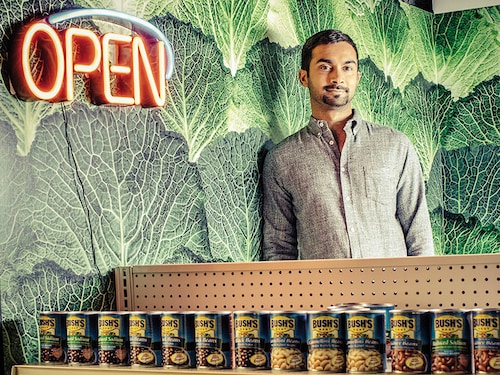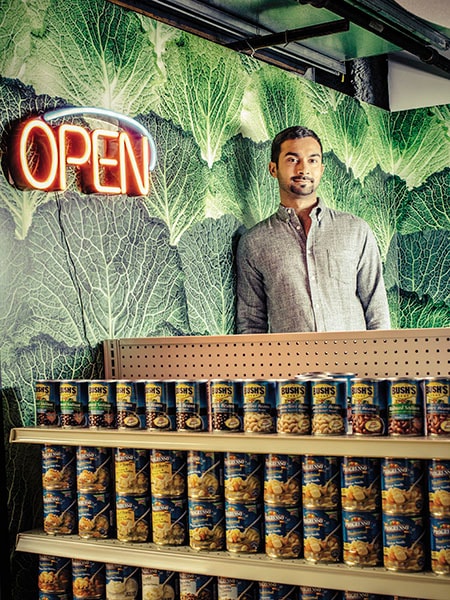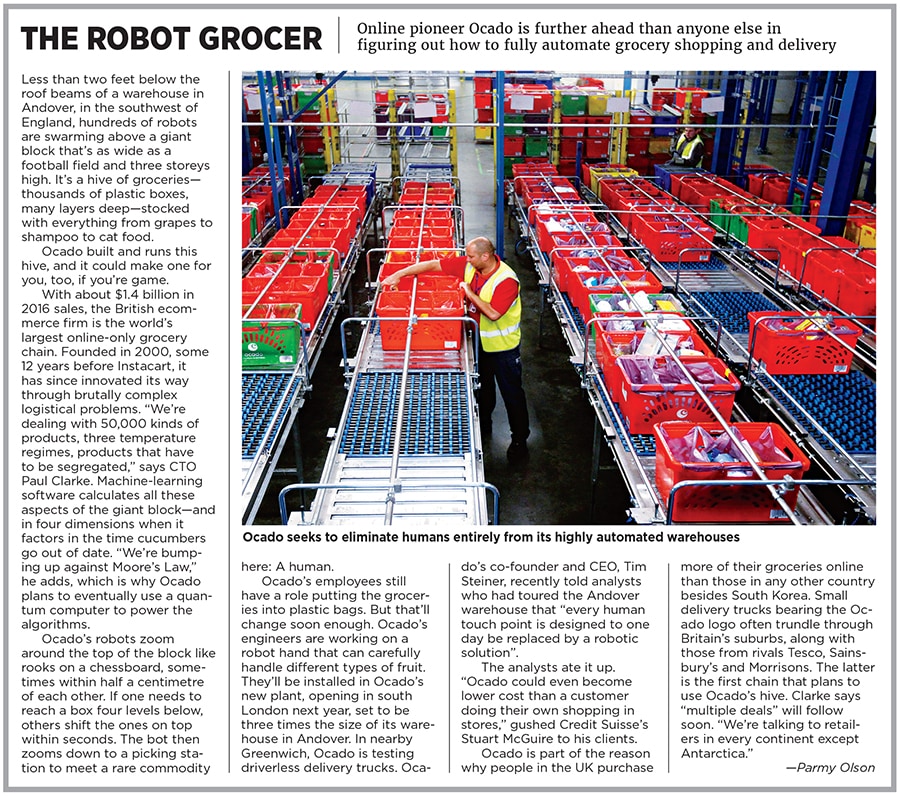Instacart: Delivering the goods
When his top rival bought his largest customer, Instacart's Apoorva Mehta cheered. It turns out he wasn't crazy


 CEO Apoorva Mehta bet Instacart could help grocers fend off Amazon. Now he must prove he was right
CEO Apoorva Mehta bet Instacart could help grocers fend off Amazon. Now he must prove he was right
Image: Timothy Archibald for ForbesAs the obits piled up, Apoorva Mehta couldn’t help but shake his head. It wasn’t his death that the press was heralding, but that of his startup, Instacart, a five-year-old grocery and retail delivery service valued at $3.4 billion. That morning in mid-June, Amazon stunned the world by announcing its purchase of Whole Foods for $13.7 billion. As shares of grocery chains plunged, many in the tech press noted that few had more to lose than Instacart. Whole Foods was not only an Instacart investor but also its biggest customer at the time, accounting for nearly 10 percent of sales.
Even as pundits turned on him, Mehta, 31, says he felt nothing but vindication. For years he’d been telling grocery chains they should prepare for an all-out assault from Amazon. Services like AmazonFresh and a plan for its own futuristic brick-and-mortar grocery store were only the beginning, he warned. While Mehta hadn’t expected the Whole Foods purchase—no one had, it seems—that only made his pitch more urgent. As Whole Foods executives broke the deal news to Mehta and Instacart’s chief business officer, Nilam Ganenthiran, in a 6 am call, the two messaged each other with thumbs-up emojis.
As if on cue, Mehta’s and Ganenthiran’s phones began ringing and lighting up with text messages shortly after—and they didn’t stop all day. It was execs from grocery chains, including some of the ones whose stocks were cratering, calling to talk business. “Every major grocery retailer in the country was calling us,” Mehta says. That morning in San Francisco, he stood in front of Instacart’s 300 employees and told them it was time for war. Within months, Costco announced that it was deepening its partnership with Instacart and would offer delivery directly from the Costco.com website. After discussions that spanned four years, grocery giant Kroger inked a deal for Instacart to deliver from its Ralphs subsidiary. Several smaller chains also signed up, bringing Instacart’s partner count to more than 165. “It really was like a thermonuclear bomb against the entire grocery industry,” Mehta says of the Amazon deal. “When we look back, that may have been a turning point for Instacart.”
Instacart has more than 500,000 customers and approximately $2 billion in revenue, according to Forbes estimates. (The company, which counts the full price of customer orders as revenue, declined to comment.) Though it started out as a service that catered to affluent big-city dwellers, the company is seeing increasing success in smaller regional markets like Buffalo, New York. Today the average Instacart shopper uses it twice a month and spends $95 per order. Instacart Express customers, who pay an annual fee of $149 for free deliveries, end up spending $5,000 a year on Instacart and order at double the frequency of its average customers.
The company says it’s prioritising growth over profits for now. But Instacart says it has reached gross-margin profitability—a measure that excludes costs like headquarters, employees and marketing—in over 80 percent of its markets. The company has raised $675 million from storied investors like Khosla Ventures and Sequoia Capital, in addition to Whole Foods. It still has more than $500 million in the bank, suggesting a relatively low burn rate.
undefinedInstacart has over 500,000 customers and approximately $2 billion in revenue[/bq]
Mehta’s idea for Instacart was sparked by bad memories of grocery shopping as a kid. Growing up in Canada, he hated having to take the bus in winter to pick up groceries and lug them back home. After studying engineering at the University of Waterloo, near Toronto, he worked in fulfilment logistics at Amazon. Two years later Mehta moved to San Francisco to try his hand at entrepreneurship. After two years of hashing out ideas, he settled on a personal shopper that would go to the store, purchase what you want and deliver it to your door.
Mehta launched the service in 2012 and applied to Y Combinator, the prestigious Silicon Valley accelerator that hatched giants like Airbnb and Dropbox. He was rejected because the application deadline had passed. Undeterred, Mehta used Instacart to deliver a six-pack of IPAs to a Y Combinator partner. Within 30 minutes, he was asked to come in for an interview and the next day was accepted into the programme. Shortly after, he closed a seed investment round.
Even as a Y Combinator graduate and with some financing under his belt, Mehta faced lots of scepticism. Silicon Valley hadn’t forgotten about Webvan—perhaps the biggest blowout of the first dotcom era. In its attempt to build a giant grocery-delivery business, Webvan became a symbol of internet hubris, burning through more than $800 million on its way to bankruptcy. In one pitch meeting, an investor handed Mehta a floppy disk with Webvan’s business plan on it, telling him to study it. Mehta says he never found a floppy drive to read it.While both Webvan and Instacart were built on a popular idea, their business models never had much in common, says Sequoia’s Michael Moritz, who invested in both. “Consumers, given the option of being able to order groceries online very easily and very simply, will flock to it,” he says. Unlike Webvan, Instacart never built massive warehouses or operated fleets of cold-storage vans. Adopting an asset-light model, Mehta first built an app that let customers shop from established retailers—charging a delivery fee and, at least initially, a slight markup. Instacart kept a cut for itself and paid the shopper.
It wasn’t until after the company launched in Chicago that a grocer first approached Instacart to talk about its business. At one point the retailer asked Mehta how much it would have to pay to be featured on Instacart. Mehta hadn’t realized that there was extra profit to be made from partnerships.
Four years later, those partnerships make up a significant percentage of revenue. More than 80 percent of orders are placed with partners, up from less than 20 percent three years ago. Instacart hit upon a new revenue stream last year, with coupons and free samples from consumer-packaged-goods companies looking to advertise to its customers.
There should be plenty of room for Instacart to continue growing. Only 7 percent of Americans buy groceries online, according to NPD Group. Following the Amazon-Whole Foods deal, the $850 billion grocery market’s shift to online is certain to accelerate, says Forrester analyst Ananda Chakravarty. “You’re going to see a lot more grocers not just getting into understanding the online space but also getting to understand their customers better.”
For his part, Mehta seems keenly aware that success can quickly turn to defeat when competing with Amazon. “What keeps me up at night is that I don’t want us to squander this opportunity,” Mehta says. After all, he doesn’t want those obits to have been prophetic.
First Published: Dec 11, 2017, 07:23
Subscribe Now